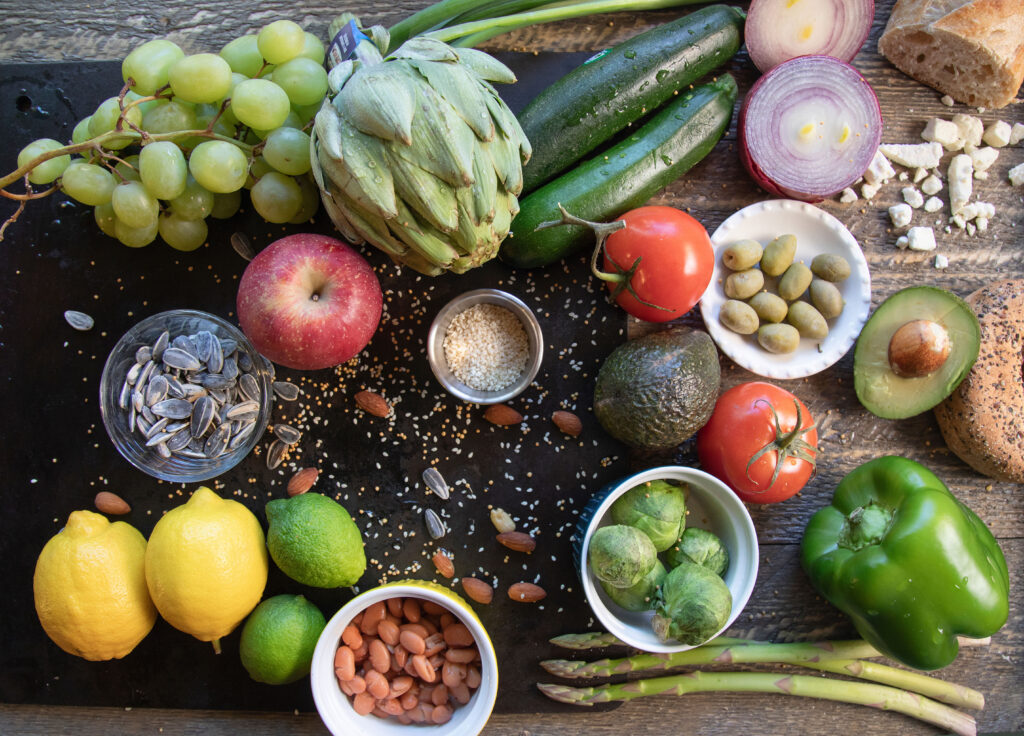Heart disease is one of Australia’s leading causes of death1, and an unhealthy diet is in turn one of the greatest contributing factors to our risks of developing heart disease. What we choose to eat and drink has a very immediate impact on several factors that are directly associated with heart disease, such as our cholesterol levels and blood pressure.
Fortunately, being careful where you put your fork can help reduce these risks. A heart-healthy diet may help reduce your levels of cholesterol, improve your blood pressure, and promote your long term wellbeing with just a few simple changes. In this article, we’ll be tapping into the expert food services knowledge of our dietitians to cover off a few of the usual suspects and how you should handle them to stay heart healthy.
The good, the bad, and the saturated
Not all fats are created equal!
Saturated and trans fats are the two fats typically regarded as “bad”. Both of these fats significantly raise your levels of high-density lipoprotein cholesterol (“bad” cholesterol), which collects within the walls of your blood vessels and forms deposits inside your arteries, raising your risk of heart disease. Saturated fats are found in foods like fatty cuts of meat and poultry, palm oil, coconut, and full cream milk, while trans fats typically appear in more heavily processed and packaged foods.2
Meanwhile, unsaturated, monounsaturated, and polyunsaturated fats are what we typically consider the “good” fats. All three raise your levels of high-density lipoprotein cholesterol while lowering levels of low-density lipoprotein cholesterol. High-density lipoprotein cholesterol is considered the “good” cholesterol as it carries cholesterol from other areas of the body back to the liver, where it is processed and removed from the bloodstream. You can find your fix of healthy fats in foods like olive oil, avocados, cashews, oily fish, margarine, and more.3

Less fashionable fibres
Your intake of soluble fibre plays another important role in reducing your risk of heart disease. Soluble fibre is one of the most important base components needed for keeping your body’s cholesterol under control, and a high-fibre diet will give your liver a significantly easier time processing captured cholesterol and fats out of the body as needed. Research has also suggested that in addition to keeping cholesterol within safe levels, high levels of dietary fibre may have other heart-helping benefits such as lower blood pressure and reducing inflammation.4
Fortunately, soluble fibre isn’t hard to come by. All fresh fruits and vegetables contain some level of soluble fibre, but certain options like sweet potatoes, broccoli, avocados, oats, and flax seeds are especially packed with fibrous content.

Salted to taste
High levels of sodium (salt) intake causes fluid retention, which in turn increases blood pressure – and heightened levels of blood pressure have a very direct link to heart disease. The Heart Foundation recommends a daily maximum of 2000 mg of sodium (equal to one teaspoon) for an average adult, but this might vary according to an individual’s state of health.
Avoiding excessive sodium can be difficult these days. Processed and packaged foods such as biscuits, muffins, cakes, sauces, pizzas, bread, cereals, and processed meats tend to be quite high in sodium levels. To try to keep your intake low, you might like to try a few tricks such as:

Eating well with healthy food services
With heart disease as common as it is, we all need to be mindful of our dietary intake and what we can do to reduce our personal risks. While there are many factors that feed into creating the conditions for heart disease to take root, we can help keep those risks down by being actively mindful of what we’re eating.
Eating in a way that manages your heart health is difficult enough out in the open world, but it can be an endless source of headaches for patients and their doctors in hospitals. If you’d feel better knowing that the patients under your care are receiving expertly designed food services reviewed by dietitians to support every area of their health during recovery, then get in touch with our healthcare expert via the details below.
1Australian Institute of Health and Welfare. 2023. “Deaths in Australia.” Australian Institute of Health and Welfare. July 11, 2023. https://www.aihw.gov.au/reports/life-expectancy-deaths/deaths-in-australia/contents/leading-causes-of-death
2The Heart Foundation. n.d. “Fats, Oils and Heart Health .” Heartfoundation-Prod.azurewebsites.net. Accessed June 25, 2024. https://www.heartfoundation.org.au/bundles/healthy-living-and-eating/fats-oils-and-heart-health
3The Heart Foundation. n.d. “Fats, Oils and Heart Health .” Heartfoundation-Prod.azurewebsites.net. Accessed June 25, 2024. https://www.heartfoundation.org.au/bundles/healthy-living-and-eating/fats-oils-and-heart-health
4Barrett, Eden M., Marijka J. Batterham, and Eleanor J. Beck. “Whole grain and cereal fibre intake in the Australian Health Survey: associations to CVD risk factors.” Public health nutrition 23, no. 8 (2020): 1404-1413.